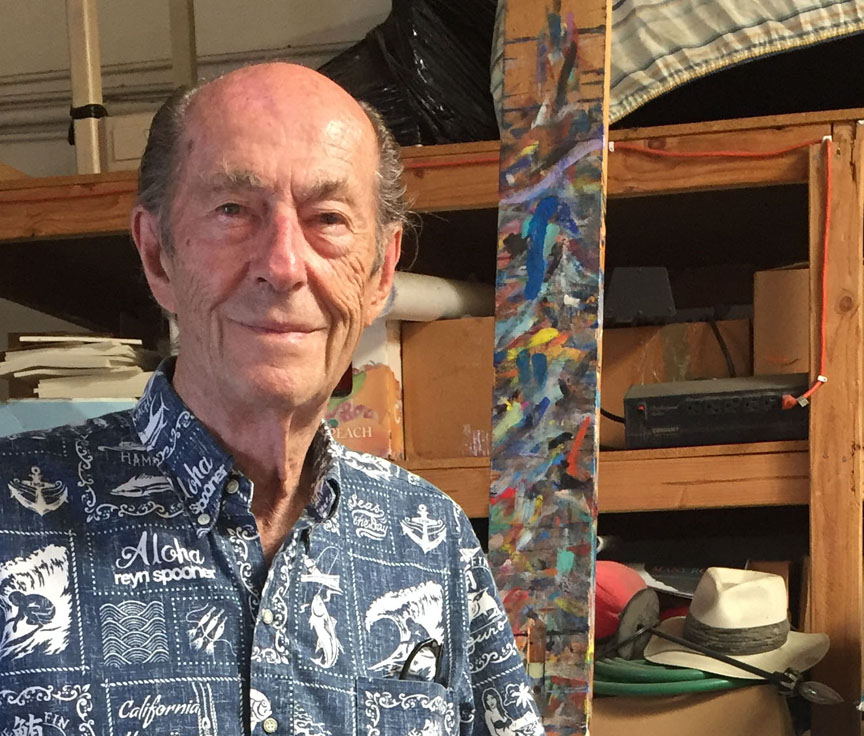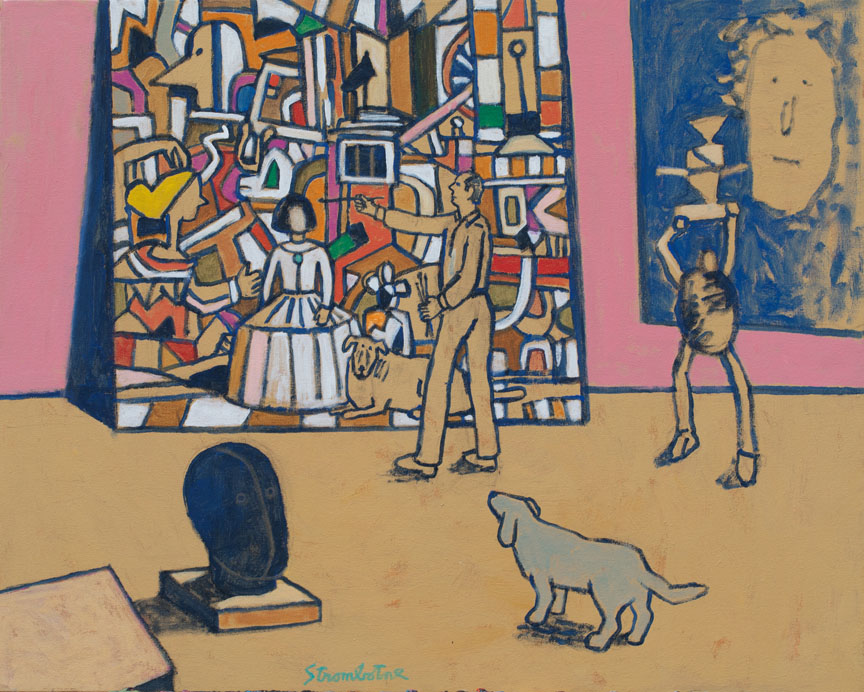Past Exhibition
James Strombotne: Imagine
Claremont Museum of Art
200 W. First Street, CA 91711
James Strombotne Paints All He Can Imagine
The Claremont Museum of Art’s exhibition James Strombotne: Imagine will focus on the work of one of the few remaining active Claremont artists from the 1950 and 60s, an era sometimes referred to as Claremont’s “golden age.” Drawings and paintings from the artist’s personal collection reflect the arc of a distinguished career dedicated to making concrete the creative mind’s imaginings.
The exhibition will open on Saturday, September 7 with a reception from 6 to 9 p.m. during Art Walk and remain on view through December 1, 2019. The exhibition is generously sponsored by Gould Asset Management LLC.
About the Artist
As a sophomore at Pomona College in 1953, James Strombotne enrolled in painting, drawing and design classes at Scripps, studying with a renowned faculty including Phil Dike and Jack Zajac. In the latter’s studios, in Claremont and in Rome, Strombotne spent, as he writes, “the most important years of his life.”
After earning an MFA from Claremont Graduate School (1959), the young artist settled in Claremont and went on to teach at UC Riverside, retiring in 2005 after 45 years. He continues to draw and paint in his Anaheim studio, as dedicated and passionate about his art as ever. Strombotne’s work has been shown in exhibitions nationwide, including the Whitney Annual and Corcoran Biennial, and can be seen in more than 40 museum collections including the Museum of Modern Art and the Whitney Museum of American Art, New York City; the Hirshhorn Museum, Washington, D.C; and the Los Angeles County Museum of Art.
Learn more about James Strombotne on his website.
About the Exhibition
The exhibition takes its title, Imagine, from his recently published book of the same name. Drawn from the artist’s collection, it will reveal the intense curiosity and creative energy of a long-dedicated artist who continues to question, to push himself, and to produce an extraordinary range of work. Strombotne’s subject matter derives from observation of, and response to, the physical world—figures, objects, landscapes that are both recognizable and abstracted in ways unique to him. Ostensibly “empty” space conveys a sense of quiet that can be surprisingly rich, emotionally evocative. His work is drawing-based, in the classical tradition, and his graphic work both stands on its own and also serves as a springboard to painting. The complex interrelationships between Strombotne’s drawings and paintings will be a focus of the exhibition.
As Strombotne writes, “In all of my work, what I am doing is sharing my vision with the viewer. A photograph captures the moment, as do I. However, I “interpret” the moment. I edit, embellish, exaggerate, manipulate, create, invent, celebrate, and so on. My work is continuous invention and imagination. I am an amalgam . . . a colorist, a draftsman, a surrealist, a fabulist, an inventor, a provocateur, a poet, a dramatist.”
Gallery



